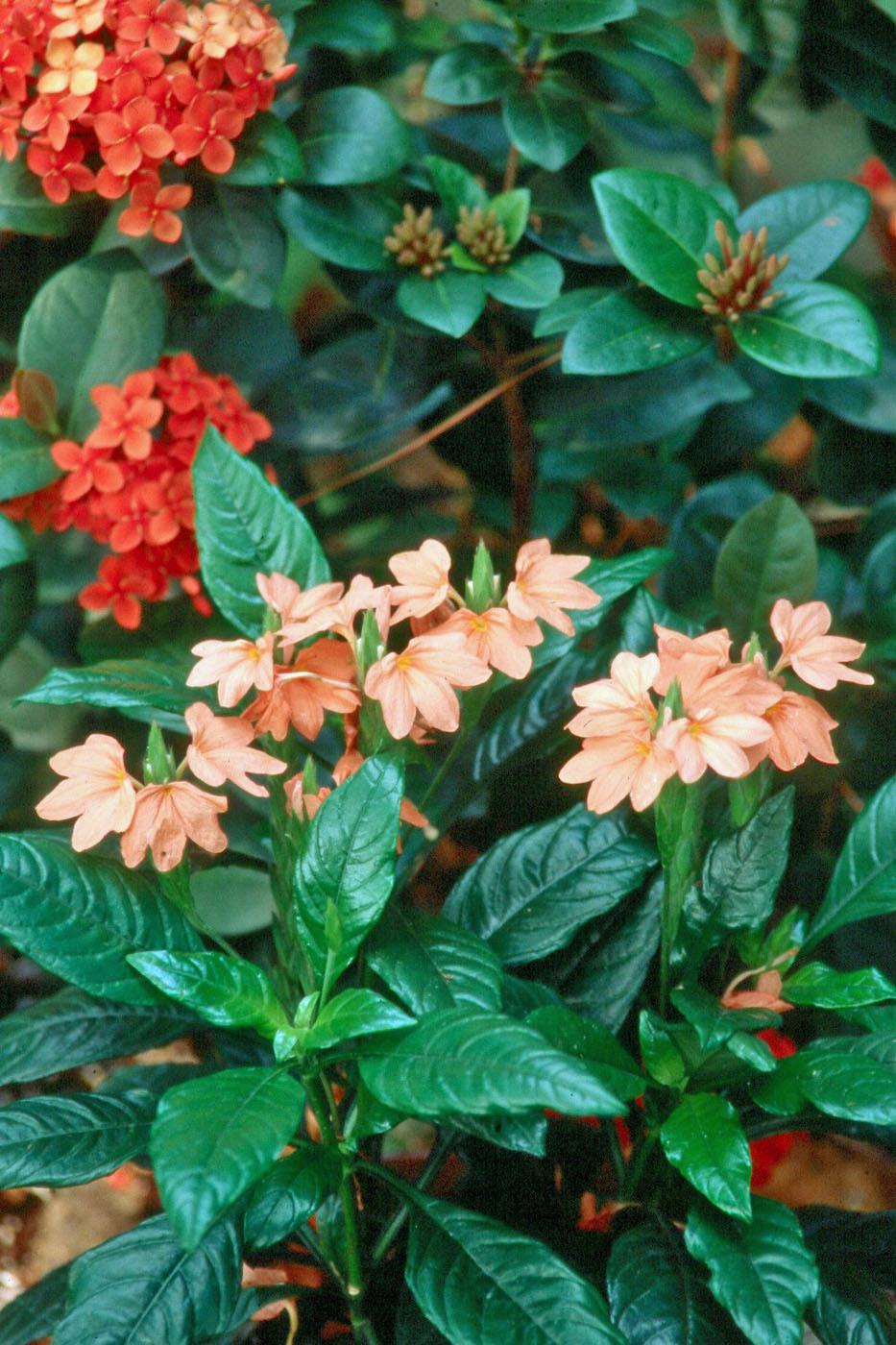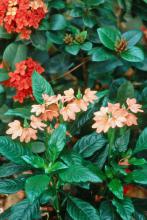Information Possibly Outdated
The information presented on this page was originally released on July 7, 2005. It may not be outdated, but please search our site for more current information. If you plan to quote or reference this information in a publication, please check with the Extension specialist or author before proceeding.
Tropical crossandra colors shade gardens
By Norman Winter
MSU Horticulturist
Central Mississippi Research & Extension Center
This time of the year, we start heading for the shady part of the garden where it is lush and cool. We think of impatiens, begonias, hostas and caladiums for seasonal color in this area, but there is another plant that needs to be in many more gardens, and that is the crossandra.
In addition to the name crossandra, it is also known as firecracker flower. To be perfectly honest, this doesn't really seem appropriate with all of the other firecracker flowers, namely the cupheas.
I suppose its brilliant color does pop out of those shady areas, but otherwise I simply like the word crossandra, which is part of its botanical name, Crossandra infundibuliformis. Can you imagine using that last word, the species, in a scrabble game? I can't even imagine saying it correctly.
The crossandra is in the family with Mexican petunias, or ruellias, and our Mississippi Medallion award-winning yellow shrimp plant. In our area, it will normally get around 18 to 24 inches tall. It could reach 4 feet tall in very mild climates.
This tropical from India and Sri Lanka offers a welcome orange, salmon or yellow to the filtered-light area. In California it is recommended for sunny areas, but in the Southeast it looks best protected by shade. In addition to the flowers that are practically non-stop for the entire season, the foliage also offers added interest. The leaves are glossy and most striking.
Choose a site with well-drained, fertile soil with perhaps a little morning sun. If you have tight, heavy clay soil, the crossandra will reward you for incorporating 3 to 4 inches of organic matter. As the plant grows, keep it deadheaded and pinched back; it will maintain a bushy shape and keep blooming with each new flush of growth.
Feed monthly with light applications of a slow-release fertilizer like a 12-6-6 with minor nutrients. In containers, feed with a balanced, controlled-release granular fertilizer according to formula recommendation, or a dilute water-soluble 20-20-20 every other week.
If you think you might be a candidate for a spring return, cut back once it has frosted and apply an extra layer of mulch. Well-drained winter soil can coax them back in the spring farther north than many expect. If you are lucky like coastal gardeners, growth will resume with warm spring weather.
The crossandra combines wonderfully with ferns, hostas, gingers, impatiens and philodendrons for a really tropical look. One of my favorite combinations is with the orange flowered Maui ixora.
The crossandra used to be sold mostly generically, but the last few years have seen new varieties like Pan American's Tropic Flame (orange-salmon) and Tropic Yellow Splash (yellow with dark yellow splash) that are a little more compact in habit. Next year, Sakata seed will introduce Orange Marmalade. Other varieties in the trade are Florida Summer (yellow), Florida Sunset (orange) and Mona Walhead (salmon).
There is no telling what variety you might find, but one thing for certain is that you have seen the plant in the past and probably passed it up because you did not know what it was. Now you do, and you know it will make a fine addition to your shade garden whenever you plant it.



